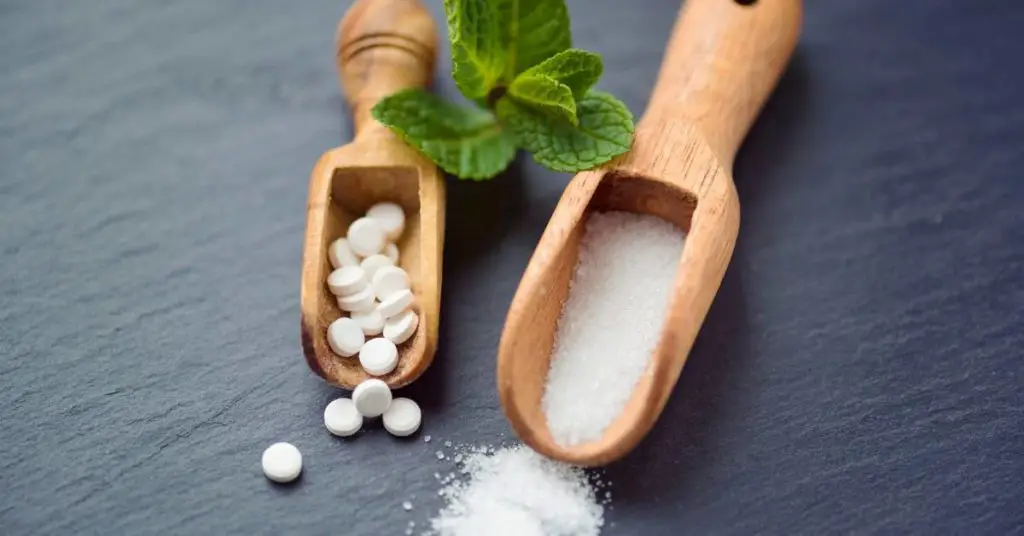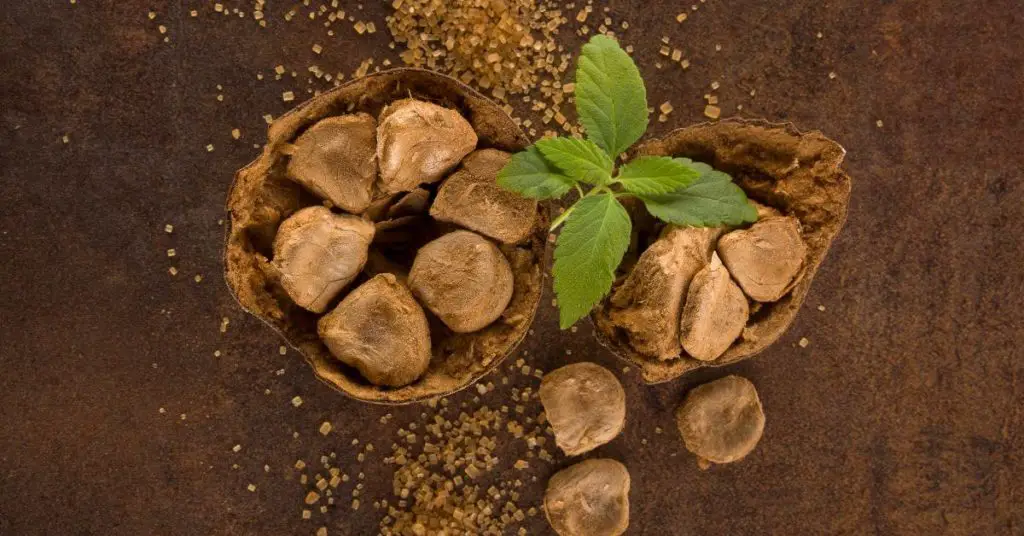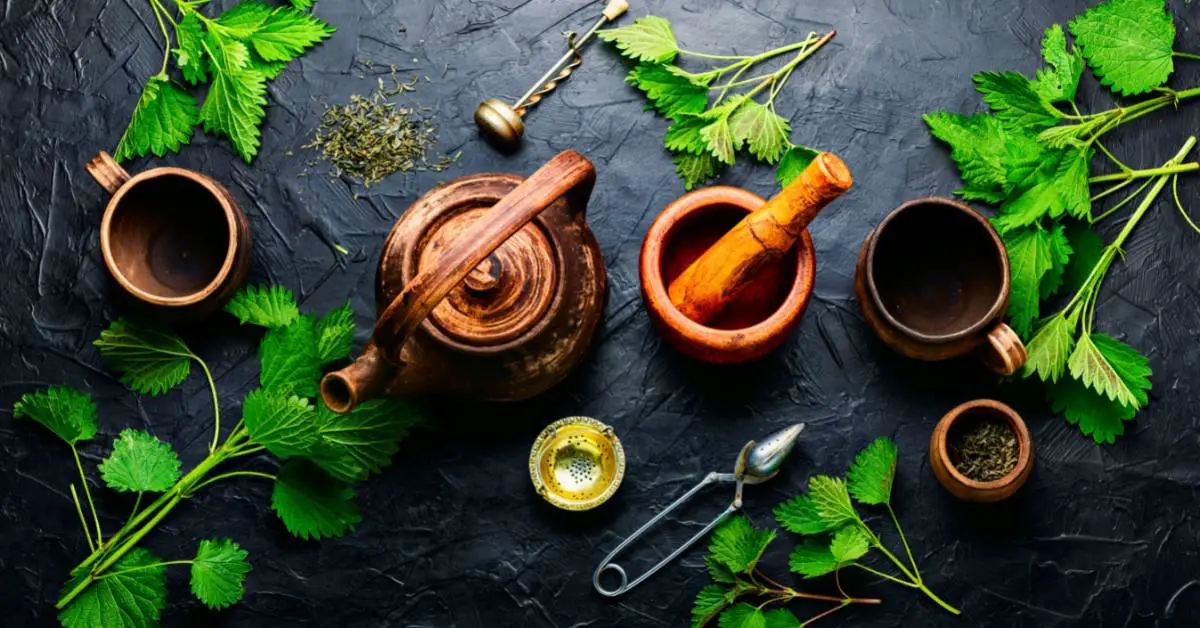Do you suffer from histamine intolerance and miss sweet treats?
Fear not, there are low-histamine sweeteners available that can satisfy your sweet tooth without triggering a reaction. In this article, we will explore some of the best low-histamine sweeteners for people with histamine intolerance.
First, let’s start with the basics. Histamine intolerance occurs when your body is unable to properly break down histamine, a chemical naturally present in some foods, including healthy foods.(1)
Some foods are also histamine liberators, meaning they trigger mast cells, a type of immune cell, to release histamine.
When histamine levels are too high, you may experience symptoms such as headaches, hives, and digestive issues. (3) This means you may need to avoid certain foods high in histamine or histamine-releasing substances, such as aged cheeses, fermented foods, and alcohol.
Unfortunately, some sweeteners that are commonly used in baking and cooking can trigger histamine intolerance symptoms in some people, and that includes some natural sweeteners, like honey.
Although honey doesn’t naturally contain large quantities of histamine or other biogenic amines, it can cause blood sugar spikes (4) and fluctuations that trigger histamine intolerance symptoms.
That’s why it’s best to avoid sweeteners that cause blood sugar spikes.
But fear not, there are still sweeteners that you can use to satisfy your sweet tooth without triggering histamine intolerance symptoms. Let’s look at some of those.

Stevia
One of the best low-histamine sweeteners is stevia. Stevia is a natural sweetener that comes from the leaves of the stevia plant. The active ingredients that give Stevia its sweetness is called steviol glycosides.
Rebaudioside A (Reb A) and Rebaudioside D (Reb D) are two of the main steviol glycosides found in the stevia plant.
Reb A is the most commonly used steviol glycoside in natural sweetener stevia, and it has a bitter taste.(9) Reb D, on the other hand, has a much milder taste than Reb A and is less likely to be bitter or make the foods you add it to taste bitter. (5)
Rebaudioside M (Reb M) is another steviol glycoside found in the stevia plant. It is much sweeter than Reb A and Reb D, and it has a cleaner and more sugar-like taste than Reb A. (6)
The structure of the enzyme that adds glucosides to Reb A is what makes the natural product stevia taste 200 times as sweet as sugar. (7)
The different types of rebaudiosides in stevia explain the bitterness of the plant. Reb A is the most bitter of the three, while Reb D and Reb M are much milder and less likely to cause bitterness.
Therefore, to limit bitterness, choose a Stevia sweetener that contains more Reb D and M and less Reb A.
Since Stevia is much sweeter than sugar, you only need a small amount to sweeten your food. Stevia is also calorie-free, making it an option if you’re watching your weight. There’s even some evidence that Stevia helps with blood glucose control and it has antioxidant properties too.(10)
It is important to note that because different brands have varying ratios of different types of rebaudiosides, some people may be sensitive to the aftertaste of stevia, so you may need to experiment with different brands to find one that you like.
Also, some Stevia products are a mixture of Stevia and other sweeteners such as dextrose (similar to glucose) or a sugar alcohol, like erythritol, so be sure to read the label, so you know what you’re getting.

Sugar Alcohols
Another low-histamine sweetener in the sugar alcohol family is xylitol. Xylitol is a sugar alcohol that is commonly used as a sugar substitute. It has a similar taste and texture to sugar, making it a popular option for baking.
Xylitol is also low in calories and has a low glycemic index (11), making it a good option for those with diabetes.
However, be aware that xylitol can cause digestive issues in some people, so you may need to start with a small amount and work your way up. People have varying tolerances for sugar alcohol.
Some people can tolerate modest quantities, while others develop gas or bloating with even modest quantities.
If you try xylitol, introduce it into your diet in small quantities and monitor your symptoms, including any digestive symptoms you have.
Also, if you have pets in your home, know that xylitol is toxic to dogs, and even modest amounts can kill a small dog. Make sure your pets don’t have access to it.
Erythritol is Low Histamine but Has Other Potential Drawbacks
Erythritol is another low-histamine sweetener and sugar alcohol that is similar to xylitol. It is a sugar alcohol that is commonly used in low-carb and sugar-free products.
Erythritol is also low in calories and has a low glycemic index. Unlike xylitol, erythritol is less likely to cause digestive issues, making it a good option for those with sensitive stomachs.
However, a recent study called into question the safety of erythritol. The study found that in mice, erythritol increased the risk of blood clots, even in amounts comparable to what a human would consume. (8)
It’s unclear if this is also an issue for humans, but I would avoid using erythritol until more is known.

Monk Fruit
If you’re looking for a low-histamine sweetener that won’t worsen your histamine intolerance, monk fruit extract could be your answer.
Not only is it naturally low in histamine, but it may also reduce the amount of histamine released by mast cells.
Plus, it’s 300-400 times sweeter than sugar and won’t cause the blood sugar levels that regular sugar can.
Monk fruit extract is high in mogrosides, a group of antioxidants known for their anti-inflammatory and anti-cancer properties. These mogrosides help scavenge free radicals, reduce oxidative stress, and protect the body from cellular damage caused by oxidative stress.
Plus, research suggests monk fruit extract may have a beneficial impact on blood sugar levels. One study found that consuming monk fruit extract helped improve blood glucose control in rats compared to sugar.(12)
These findings suggest that monk fruit could potentially be a healthful natural sweetener for individuals with diabetes or those looking to manage their blood sugar levels.
Monk Fruit Has Anti-Inflammatory Benefits Too
Moreover, monk fruit has anti-inflammatory and anti-allergic properties (13), which could be beneficial for those with conditions such as asthma, eczema, and other inflammatory diseases.
It may also have a positive impact on cardiovascular health by reducing inflammation and oxidative stress, both of which are risk factors for heart disease.
You can add monk fruit to low-histamine beverages, like herbal teas, and even use it in baking. However, you’ll need to adjust, since it’s sweeter than sugar.
As a general rule, use one-third to one-half the amount of monk fruit sweetener as you would sugar.
Low-Histamine Sweeteners: What Are the Best Options?
Considering the pros and cons of these low-histamine sweeteners, stevia and monk fruit are your best bets due to concerns about erythritol and blood clots and the fact that all sugar alcohol can cause digestive symptoms if you consume too much.
Always do your research. Both may contain additives. For example, monk fruit and Stevia sweeteners may contain other sugars or sweeteners, such as erythritol.
Additionally, monk fruit and stevia sweeteners may contain other ingredients, such as preservatives or flavorings. So, read the label, check the website, and know what you’re buying and what additives it contains.
References:
- Comas-Basté O, Sánchez-Pérez S, Veciana-Nogués MT, Latorre-Moratalla M, Vidal-Carou MDC. Histamine Intolerance: The Current State of the Art. Biomolecules. 2020 Aug 14;10(8):1181. doi: 10.3390/biom10081181. PMID: 32824107; PMCID: PMC7463562.
- Wang KY, Tanimoto A, Yamada S, Guo X, Ding Y, Watanabe T, Watanabe T, Kohno K, Hirano K, Tsukada H, Sasaguri Y. Histamine regulation in glucose and lipid metabolism via histamine receptors: model for nonalcoholic steatohepatitis in mice. Am J Pathol. 2010 Aug;177(2):713-23. doi: 10.2353/ajpath.2010.091198. Epub 2010 Jun 21. PMID: 20566747; PMCID: PMC2913336.
- “Histamine Intolerance: Causes, Symptoms, and Diagnosis – Healthline.” https://www.healthline.com/health/histamine-intolerance.
- “High Blood Sugar: Symptoms, Spike, and More – Healthline.” 21 Jul. 2022, https://www.healthline.com/health/blood-sugar-spike.
- Tao R, Cho S. Consumer-Based Sensory Characterization of Steviol Glycosides (Rebaudioside A, D, and M). Foods. 2020 Jul 31;9(8):1026. doi: 10.3390/foods9081026. PMID: 32751835; PMCID: PMC7466183.
- James Han. “What are Steviol glycosides (E960) in Stevia leaf? Types, Uses and Safety”. 2023. Foodadditives.Net. https://foodadditives.net/natural-sweeteners/steviol-glycosides/.
- “This enzyme is what makes stevia so sweet”. 2023. Cen.Acs.Org. https://cen.acs.org/biological-chemistry/natural-products/enzyme-makes-stevia-sweet/97/i24.
- “Artificial Sweetener Erythritol’s Major Health Risks”. 2023. Health.Clevelandclinic.Org. https://health.clevelandclinic.org/erythritol/.
- “Cornell Scientists Reduce Sweetener Stevia’s Bitter Bits | Cornell Chronicle.” 2015. Cornell Chronicle. 2015. https://news.cornell.edu/stories/2015/11/cornell-scientists-reduce-sweetener-stevias-bitter-bits.
- Cecilia Bender. Study of Stevia rebaudiana Bertoni antioxidant activities and cellular properties: International Journal of Food Sciences and Nutrition: Vol 66, No 5 (2023). Available at: https://www.tandfonline.com/doi/abs/10.3109/09637486.2015.1038223?journalCode=iijf20 (Accessed: 3 April 2023).
- Gunnars, Kris. 2018. “Xylitol: Everything You Need to Know.” Healthline. Healthline Media. October 4, 2018. https://www.healthline.com/nutrition/xylitol-101.
- ResearchEffects of a synbiotic yogurt using monk fruit extract as sweetener on glucose regulation and gut microbiota in rats with type 2 diabetes mellitus (2023). Available at: https://www.sciencedirect.com/science/article/pii/S0022030220301302 (Accessed: 3 April 2023).
- The health benefits of monk fruit and how to enjoy it (2023). Available at: https://www.medicalnewstoday.com/articles/monk-fruit-benefits (Accessed: 3 April 2023).

